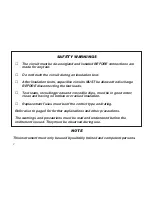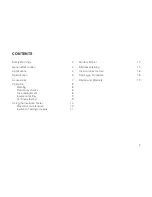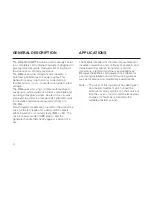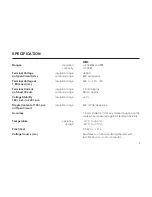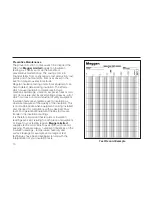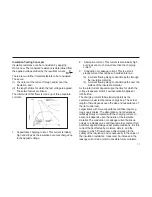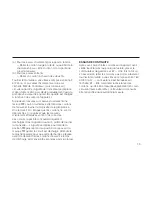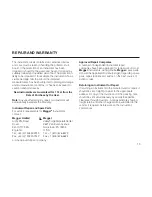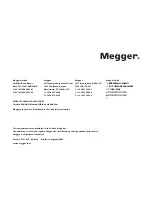
OPERATION
WARNING
1. The circuit under test
must
be de-energized and
isolated before insulation or continuity tests are
made.
2. When capacitive circuits have been tested allow a
suitable time to elapse before disconnecting the
test leads, for the circuit to discharge.
3. Instruments used in dusty environments should be
stripped and cleaned periodically.
4. Do not leave the instrument exposed to direct heat
from the sun for long periods.
5. The instrument circuit contains a static sensitive
device. If the instrument casing is opened for any
reason (this will automatically invalidate any
warranty covering the instrument), care must be
exercised in handling the printed circuit board.
This should be done in accordance with DEF
STAN 59-98 and BS 5783 specifications for
handling electrostatic sensitive devices.
Printed circuit boards containing such devices are
identified either by a yellow warning label or by a
yellow legend and a large yellow dot on the p.c.b.
(Initially the dot may not be included.)
PRELIMINARY CHECKS
Inspect the test leads to see that they have good
unbroken insulation. Connect the red and black leads,
terminated with the clips, to the red (+) and black (–)
terminal sockets respectively in the side of the
instrument case. Leave the leads coiled or twisted
together, but ensure that their clips are not touching
anything. Set the slider switch to the ‘M
Ω
’ position.
Turn the generator handle at approximately 160 r.p.m.
and observe the meter pointer, it should rest over the
‘
∞
’ (infinity) position on the scale. If it does not the test
leads may be faulty and should be inspected more
closely for damage. Replace them if necessary.
Connect the test lead clips together and turn the
generator handle again, the meter should read zero.
If it indicates infinity or a high resistance value the
leads may be open circuit and should be inspected
further, replace if necessary. Shorting the leads
together and obtaining a zero reading also proves that
the instrument is working.
To check that the fuse in the continuity circuit is intact,
leave the test leads connected together and set the
slider switch to the ‘
Ω
’ position. Turn the generator
handle again, the reading obtained should be zero (or
very nearly so). If the reading is beyond full scale on
the ‘
Ω
’ range the fuse has ruptured and should be
replaced.
8
Summary of Contents for WM6
Page 1: ...M WM6 Wee Megger Tester User Guide Guide de l utilisateur Gebrauchsanleitung Gu a del usuario...
Page 20: ......
Page 21: ......


